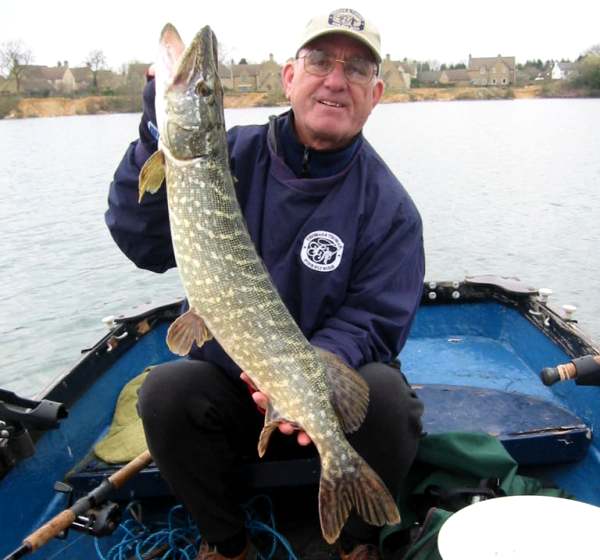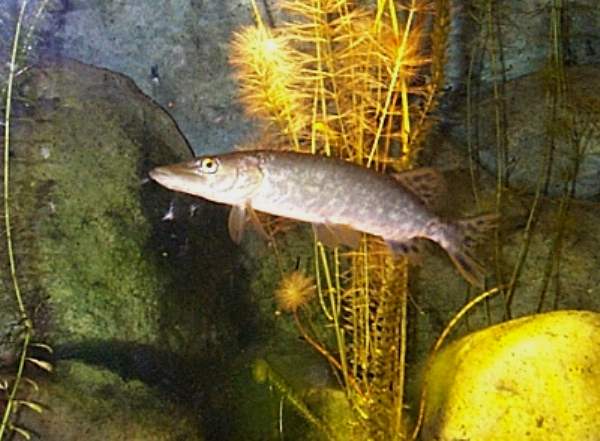Esox lucius - Pike
Phylum: Chordata - Class: Actinopterygii - Order: Esociformes - Family: Esocidae

This is the water wolf, the ultimate stalker of its prey - and a very attractive if rather fearsome fish it is too.
Pike generally inhabit still or slow-flowing, weedy waters of lakes, canals and rivers, but in some parts of Britain they manage to retain a hold in spate rivers that would not appear to be ideal habitat.
Pike are carnivorous, and on salmon rivers they no doubt eat quite a few Salmon parr and smolts. Slower moving coarse fishes are their staple diet in most waters, but frogs, small mammals and young water birds also feature on the Pike's menu. Large Pike also eat small Pike, and so attempts to reduce the Pike population by culling large specimens are invariably a failure.

Llandegfedd Reservoir, in South-east Wales, has produced some very large Pike. A specimen of 46lb 13oz (21.278kg) was caught there by Mr R Lewis in 1992 and is the current British rod-caught record pike.
Pike spawn in early spring, usually in March and April in the south of Britain but a little later the further north you go.
Acknowledgements
This page includes pictures kindly contributed by Martin James MBE.
Excited at the prospect of flyfishing? So are we, and we're pretty sure you would find the Winding River Mystery trilogy of action-packed thrillers gripping reading too. Dead Drift, Dead Cert, and Dead End are Pat O'Reilly's latest river-and-flyfishing based novels, and now they are available in ebook format. Full details on our website here...
Buy each book for just £4.96 on Amazon...
Please Help Us: If you have found this information interesting and useful, please consider helping to keep First Nature online by making a small donation towards the web hosting and internet costs.
Any donations over and above the essential running costs will help support the conservation work of Plantlife, the Rivers Trust and charitable botanic gardens - as do author royalties and publisher proceeds from books by Pat and Sue.
